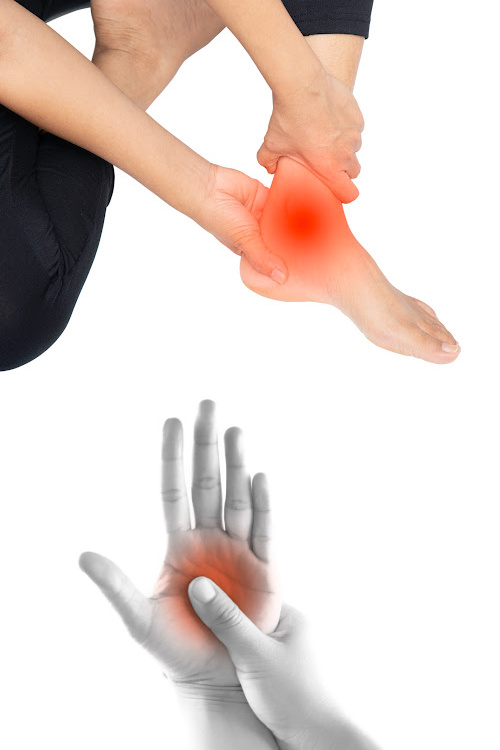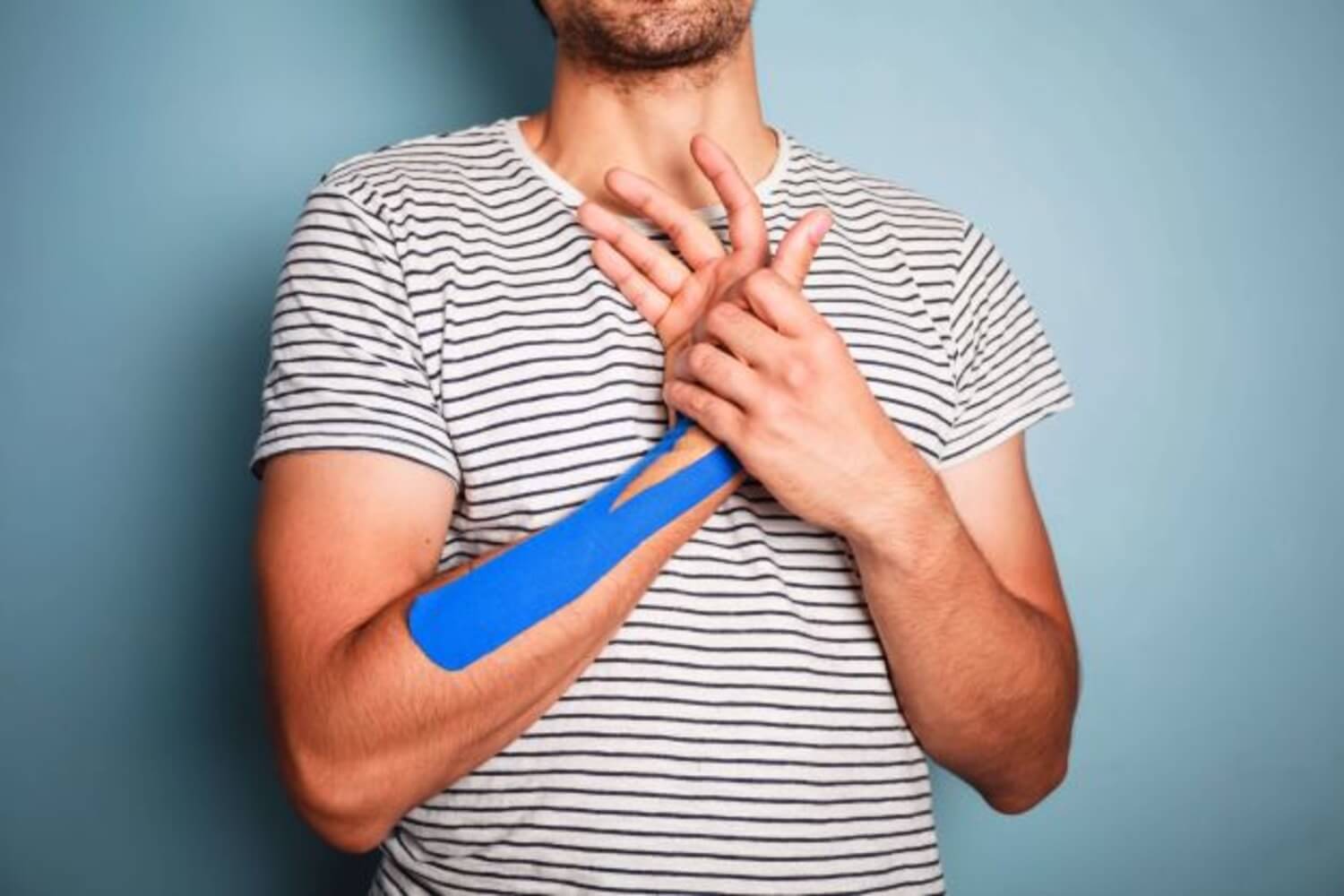Experiencing muscle spasms in the arm can be quite uncomfortable and disruptive, as they may interrupt your daily life. However, with the right understanding and treatment approaches, they don’t have to stop you from doing the activities you enjoy.
In this article, we’ll explore what happens when muscle spasms occur in the arm, their possible causes, and effective treatment options, including the innovative approaches NextPain Care offers. Whether you’re seeking relief from an isolated muscle spasm in the arm or recurring episodes, understanding the underlying factors and implementing targeted therapies can significantly improve your comfort and well-being.
What Are Muscle Spasms?
Also known as muscle cramps, muscle spasms are sudden and involuntary contractions of one or more muscles. They can manifest in various parts of the body, including the arms, where muscle spasms in the tricep area can be particularly prevalent. Muscle spasms can even result in a visible bulging or tightening of the affected muscle under the skin, which can be uncomfortable and worrying.
Spasms in the arm can range from mild, transient twitches to intense, painful contractions that last for several minutes. But what exactly do they feel like?
What Does A Muscle Spasm Feel Like?
The sudden onset of muscle spasms in the arm can be quite painful and limit your range of motion. It is not uncommon to experience sharp or stabbing pain, aching, or a feeling of tightness in the affected muscle. These sensations are attributed to a lack of blood supply (ischemia) to the muscle, which contributes to the discomfort and pain associated with muscle spasms.
Some individuals may describe the sensation as a knot or a cramp that refuses to release. The intensity of muscle spasm pain can vary from mild discomfort to severe agony, depending on the underlying cause and individual sensitivity. Ranging from a few seconds to several minutes, the duration of muscle spasms can vary widely. In more severe cases, muscle spasms may persist for hours.
Regardless of the intensity and duration, muscle spasms in the arm have the potential to interfere with your everyday activities, particularly sports and exercise, which can significantly impact your overall quality of life. To effectively prevent muscle spasms, it is important to understand their underlying causes, which we will delve into in the next section.
Possible Conditions That May Cause Muscle Spasms In The Arm
By discovering the underlying conditions that can contribute to muscle spasms in the arm, we have better hope of finding effective treatment and long-term relief. It’s important to note that most muscle spasms in the arm do not indicate serious underlying issues. Muscle fatigue or overuse, often accompanied by dehydration or electrolyte depletion, is one of the primary culprits behind muscle spasms. These conditions commonly arise from repetitive motions, excessive strain, or engaging in physical activity.
However, muscle spasms in the arm can occasionally be linked to more chronic conditions, some of which include:
Neuropathy
Neuropathy, or peripheral neuropathy, refers to damage or dysfunction of the peripheral nerves. When the nerves responsible for controlling the muscles in the arm are affected, it can lead to muscle spasms. Various factors, such as diabetes, vitamin deficiencies, or certain prescription medications, may cause this condition. Proper diagnosis and specialist management of neuropathy are essential in addressing the painful symptoms of muscle spasms.
Amyotrophic Lateral Sclerosis (ALS)
ALS, also known as Lou Gehrig’s disease, is a progressive neurodegenerative disorder that affects the nerve cells responsible for controlling voluntary muscles. In ALS, the reason why muscle spasms occur in the arm is not fully known. However, it’s suggested that the condition causes excessive nerve excitation, which causes spontaneous muscle contractions and spasms. ALS requires comprehensive and multidisciplinary medical care to manage the symptoms effectively.
Kidney Disease
Kidney disease can disrupt the balance of electrolytes and minerals in the body, leading to muscle cramps and spasms, including the muscles in the arms. Proper treatment and managing fluid and electrolyte imbalances can help alleviate muscle spasms associated with kidney disease.
Lupus
Lupus is an autoimmune disease that can affect various parts of the body, including the muscles and joints. Muscle spasms in the arms can be a manifestation of lupus-related inflammation and tissue damage. Treatment for lupus focuses on controlling the underlying autoimmune response and managing symptoms to reduce the occurrence of muscle spasms.
Again, it is important to remember that cramps in the arm are much more likely to be caused by muscle fatigue and poor hydration rather than these chronic conditions. If you are concerned, it’s important to contact your healthcare professional.
We’ll now shift our focus to understanding what actions you can take when you experience these uncomfortable and disruptive arm spasms.
What To Do When You Get Muscle Spasms In Your Arms
When muscle spasms occur in your arms, there are several strategies you can utilize to find relief. These include:
- Stretching: Gentle stretching exercises can help alleviate muscle tension and improve blood flow throughout the affected area. Focus on stretching the bicep, tricep, and shoulder muscles to help alleviate pain and reduce the frequency of muscle spasms.
- Resting: Giving your muscles adequate rest when you encounter spasms can reduce the sensitivity and excitability of the arm muscles. This can help reduce the duration of spasms. Avoid overexertion and take breaks when engaging in repetitive arm movements to reduce their overall frequency.
- Cold therapy: Applying a cold pack or ice wrapped in a cloth to the affected area can help reduce inflammation and provide temporary relief from the pain caused by muscle spasms.
- Over-the-counter medications: Nonsteroidal anti-inflammatory medications (NSAIDs), such as ibuprofen, can help reduce pain and inflammation associated with muscle spasms. However, it’s important to use these medications according to the recommended dosage and consult with a healthcare professional if you have any underlying conditions or concerns.
While most muscle spasms are harmless and resolve on their own, there are instances where they may indicate a more serious underlying issue. Let’s move on to explore the red flags that should prompt you to seek medical attention and ensure your well-being.
When To Worry About Muscle Spasms
Although muscle spasms in the arms generally tend to resolve without intervention, there are specific circumstances that warrant seeking medical attention. It is important to be aware of these situations to guarantee your health and well-being and address any potential underlying issues. If you experience any of the following, it is advisable to consult a healthcare professional:
- Muscle spasms that are severe, persistent, or significantly impacting your daily activities.
- Muscle spasms that are accompanied by muscle weakness, numbness, or tingling sensations.
- You have a history of neurological disorders or underlying medical conditions that may contribute to muscle spasms.
- Muscle spasms that are also associated with other concerning symptoms, such as difficulty breathing, chest pain, or changes in consciousness.
Next, we’ll explain what healthcare professional is best to consult when the muscle spasms in your arms seem to be getting worse.
Who Should You See For Help When It Gets Worse?
If your muscle spasms in the arms worsen or persist despite self-care measures, it is advisable to consult a healthcare professional. Depending on the specific characteristics of your condition, different specialists may be involved in your care. Here are some scenarios where you may benefit from seeking help from specific healthcare providers:
- Primary care physician: Your primary care physician can evaluate your symptoms, perform an examination, and provide initial guidance and treatment recommendations.
- Orthopedic specialist: If your muscle spasms are accompanied by joint pain or a limited range of motion, an orthopedic specialist can diagnose and treat musculoskeletal issues.
- Physical therapist: For muscle spasms related to postural issues or movement patterns, a physical therapist can assess your condition and design an exercise program.
- Neurologist: If muscle spasms are accompanied by neurological symptoms like numbness or weakness, a neurologist can conduct evaluations and develop a tailored treatment plan.
Remember, the choice of a specialist may vary based on location and individual circumstances. If you are unsure about what medical help you need, consult your primary care physician for guidance on appropriate referrals.
Following a thorough evaluation with a healthcare professional, they are likely to prescribe various conventional treatment options to address the frustrating and painful symptoms of muscle spasms. In the following sections, we will explore these treatment approaches in detail.
Conventional Medical Treatments
In certain instances, conventional medical treatments may be required to effectively address and provide relief from muscle spasms in the arm. The treatments below are typically reserved for severe or chronic cases and may include:
Trigger Point Injections
Trigger point injections involve injecting a local anesthetic or medication directly into the trigger points, which are areas of knotted or hyperirritable muscle fibers. This treatment helps relax the muscles and alleviate spasms. It is a minimally invasive procedure that can provide temporary relief for localized muscle spasms.
Surgery
Surgery is rarely recommended for treating muscle spasms unless they are caused by an underlying structural issue, such as nerve compression or muscle imbalances. Surgical interventions aim to address the root cause of the spasms and restore proper muscle function.
As we explore conventional medical treatments for muscle spasms in the arm, it’s important to note that innovative approaches like electroanalgesia offer alternative solutions.
Now, let’s look at the specific treatments and the unique approach that NextPain Care offers for effective muscle spasm management.
The NextPain Care Approach To Muscle Spasms
As a physician-led company, NextPain Care differentiates itself by integrating physical therapy and behavioral therapy into our innovative three-level system. Our approach is rooted in evidence-based outcomes and data, ensuring our treatments are both effective and scientifically validated.
We emphasize beginning with conservative treatments such as physical therapy, lifestyle changes, and medication management to effectively manage pain, including muscle spasms in the arms. When these non-invasive treatments are insufficient, we turn to more advanced options to provide more comprehensive pain relief.
This unique combination enables us to offer holistic care that addresses the multifaceted needs of our patients, setting us apart in the healthcare industry.
Conditions We Treat At NextPain Care
We treat a wide variety of conditions, prioritizing evidence-based approaches and minimally invasive options to enhance the well-being of our patients.

Peripheral Neuropathy Treatment
Peripheral neuropathy is a condition that can cause severe pain, impacting daily life. At NextPain Care, we use evidence-based practices to provide relief from the painful symptoms of peripheral neuropathy, adhering to the highest standards set by medical...

Radial Tunnel Syndrome Pain Treatment
Radial tunnel syndrome is a painful condition caused by pressure on the radial nerve, leading to symptoms like aching pain in the forearm and weakness in the hand and wrist....

Ulnar Nerve Entrapment Pain Treatment
Ulnar nerve entrapment can cause pain, numbness, and tingling in the arm and hand. NextPain Care offers personalized treatments to manage symptoms and improve...

Carpal Tunnel Syndrome Treatment
Carpal tunnel syndrome is a condition that causes pain, numbness, and tingling in the hands and wrists, significantly affecting daily activities and hand...
Recovering From Muscle Spasms
In addition to medical interventions, several at-home exercises and self-care practices can help you recover from muscle spasms and prevent them from reoccurring. These may include:
- Stretching and strengthening exercises: Engaging in regular stretching and strengthening exercises can help improve muscle flexibility, balance, and overall arm function. Consult with a healthcare professional or physical therapist to learn specific exercises suitable for your condition.
- Hydration and nutrition: Maintaining proper hydration and a balanced diet rich in essential nutrients can support muscle health and reduce the likelihood of muscle spasms.
- Heat therapy: Applying heat, such as a warm towel or hot compress, to the affected area can help relax the muscles and promote blood flow, aiding in the recovery process.
Don’t Let Muscle Spasms Hinder Your Daily Life
Muscle spasms in the arm can be disruptive and affect your daily living activities, but there is hope for finding relief. Through the comprehensive care approach offered by NextPain Care, individuals experiencing muscle spasms can explore personalized treatment plans that go beyond traditional approaches.
By addressing the root causes of muscle spasms, NextPain Care aims to provide long-lasting solutions that empower individuals to regain control of their well-being. It’s important to remember that early detection and proper diagnosis are crucial in accessing effective treatment.
If you are experiencing persistent or severe muscle spasms in your arms, it is essential to consult with a healthcare professional who can evaluate your condition and guide you toward appropriate care.
Explore the possibilities offered by NextPain Care and take the first step towards finding relief and improving your quality of life.
Stop suffering from pain caused by muscle spasms.
